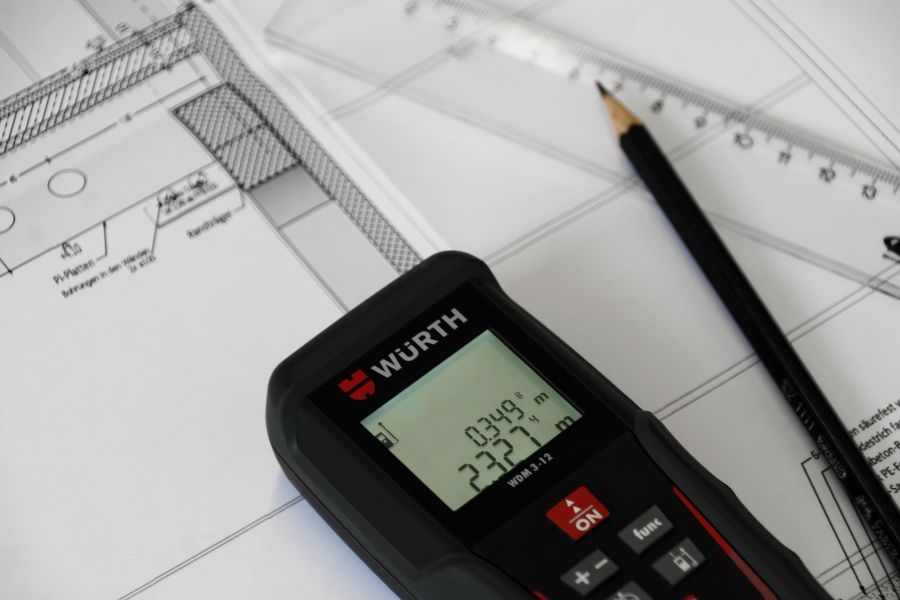Distance sensors have become crucial in various sectors, from robotics to automotive technology. Their ability to detect and measure distances between objects offers many applications. When embarking on a project requiring a distance sensor, choosing the right one is essential. This article will guide you through making the best choice when looking for sensors to measure distance.
Understanding Distance Sensors
These sensors measure the distance between themselves and an object. They emit some form of energy – like ultrasonic waves, infrared light, or lasers – towards an object. When this energy bounces back, the sensor calculates the time taken for the return journey, translating it into a distance measurement.
Types Of Distance Sensors
- Ultrasonic: These emit sound waves at frequencies higher than the human ear can hear. They’re commonly used in applications like car parking sensors because they can detect a range of materials, including soft ones like cloth or skin.
- Infrared (IR): Emitting infrared light beams, which reflect off objects and return to the sensor, IR sensors can detect the distance based on light reflection. They’re often found in devices like TV remotes.
- Laser: Offering high precision, laser sensors emit laser beams to measure distance. When the beam reflects back, the sensor calculates the distance based on the time taken. These are commonly used in surveying and construction.
Factors To Consider When Choosing A Distance Sensor
- 1. Range: Consider how far you need the sensor to detect. Some sensors are designed for short-range measurements, while others can measure longer distances.
- 2. Accuracy: Ensure the sensor can provide readings as accurate as your project requires. Some applications might need precise measurements, while others can work with approximate values.
- 3. Material of Target Object: Not all sensors can detect all materials equally well. For instance, clear glass might be challenging for some IR sensors.
- 4. Environment: If the project is outdoors, it’s essential to choose a sensor resistant to elements like water, dust, or extreme temperatures.
- 5. Cost: Always keep the budget in mind. While some high-end sensors provide excellent accuracy and range, there might be more affordable options that suit the project’s needs.
- 6. Size and Form Factor: Depending on the project’s space constraints, the sensor’s size and shape might be decisive.
Applications Of Distance Sensors
Knowing where and how these sensors are commonly used can help make an informed decision.
- Robotics: Sensors to measure distance help robots navigate, avoid obstacles, and interact with their environment.
- Automotive: Parking sensors and some autonomous driving systems rely on distance sensors to detect nearby objects.
- Security: Some alarm systems use distance sensors to detect intruders.
- Construction: Lasers are frequently used to get precise measurements in building projects.
Integration And Compatibility
Another vital aspect to bear in mind is how the chosen distance sensor integrates into the broader system of the project.
- Interface: Different sensors may come with varied interfacing options. Depending on the project, you might need analog, digital, or even a specific communication protocol like I2C or SPI. Ensure that the sensor can easily communicate with the rest of your system.
- Power Requirements: It’s imperative to check the sensor’s power requirements. Some might operate on low power, making them ideal for battery-operated systems, while others might require a more substantial power source.
- Software and Libraries: Some sensors come with dedicated software or libraries, especially if they are meant for platforms like Arduino or Raspberry Pi. This can significantly speed up the development process, offering ready-made tools for interpreting the sensor’s data.
Maintenance And Longevity
Once integrated into a project, a distance sensor will likely be in operation for a significant period. Therefore, it’s essential to understand its longevity and any potential maintenance needs.
- Durability: A sensor’s durability can be paramount in industrial or outdoor applications. Research the build quality and materials of the sensor. Some might come with rugged features, ensuring they last longer in challenging conditions.
- Calibration: Sensors might drift from their original settings over time, leading to inaccurate readings. It’s worth investigating how often a sensor might need recalibration and how straightforward this process is.
- Replacement Parts: In the event of a sensor malfunction, it’s beneficial to know if individual parts can be replaced or if the entire sensor unit needs to be substituted.
Reviews And Recommendations
Lastly, leverage the experiences of others.
- User Reviews: Before finalizing a purchase, look for reviews from other users. Their hands-on experiences can offer valuable insights into a sensor’s real-world performance, advantages, and potential challenges.
- Professional Recommendations: Seek guidance from professionals or experts in the field. They might have direct experience with specific sensors and can provide recommendations based on the needs of your project.
Final Thoughts
Choosing the right distance sensor for a project might initially seem daunting, given the multitude of options available. However, it becomes easier to make an informed decision by systematically evaluating the needs of the project, understanding the different types of sensors, and considering factors like integration, durability, and real-world feedback.
Ensuring the selected sensor aligns with the project’s requirements will not only guarantee accurate and reliable measurements but also ensure the longevity and success of the overall project. Researching and selecting wisely is worth the effort, as the right sensor can elevate the entire project to new heights.
